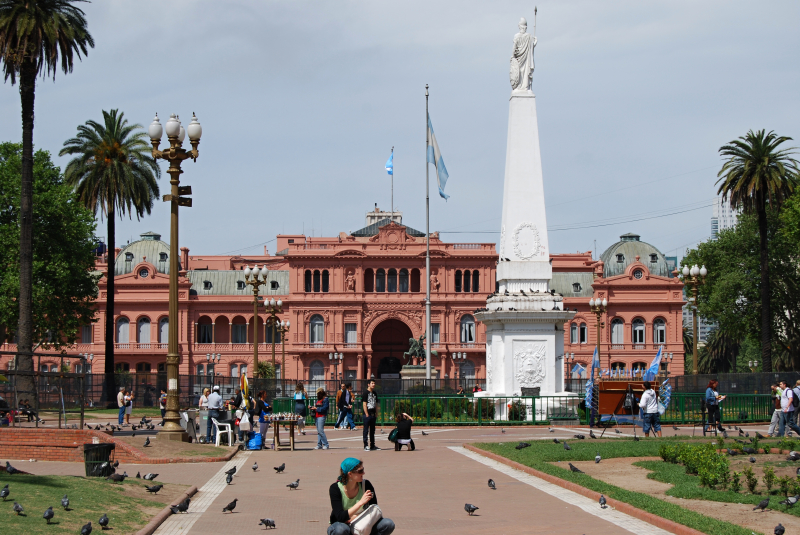The Plaza de Mayo
The Plaza de Mayo is a city square in Buenos Aires, Argentina, and the city's main foundational site. After the demolition of the Recova building in 1884, it united the city's Plaza Mayor and Plaza de Armas, which were then known as Plaza de la Victoria and Plaza 25 de Mayo, respectively.
The Plaza de Mayo in Buenos Aires has witnessed some of the most significant events in Argentine history, as well as some of the country's largest popular demonstrations. The Pirámide de Mayo was inaugurated in the square's hub on the first anniversary of the May Revolution in 1811, becoming Buenos Aires' first national monument.
It is situated in the Monserrat barrio's financial district known as microcentro. As one of the most beautiful historical sites in Argentina, It is bounded by the streets Bolvar, Hipólito Yrigoyen, Balcarce, and Avenida Rivadavia, and three important avenues emerge from its west side: Avenida Presidente Julio Argentino Roca, Avenida Roque Sáenz Pea, and Avenida de Mayo.
Several significant monuments and points of interest surround the square, including the Cabildo, the Casa Rosada (the President of Argentina's seat), the Metropolitan Cathedral, the Buenos Aires City Hall, and the headquarters of the Bank of the Argentine Nation. The Underground stations of Plaza de Mayo (Line A), Catedral (Line D), and Bolvar (Line E) are located beneath its grounds (Line E).
Location: Monserrat, Buenos Aires, Argentina











